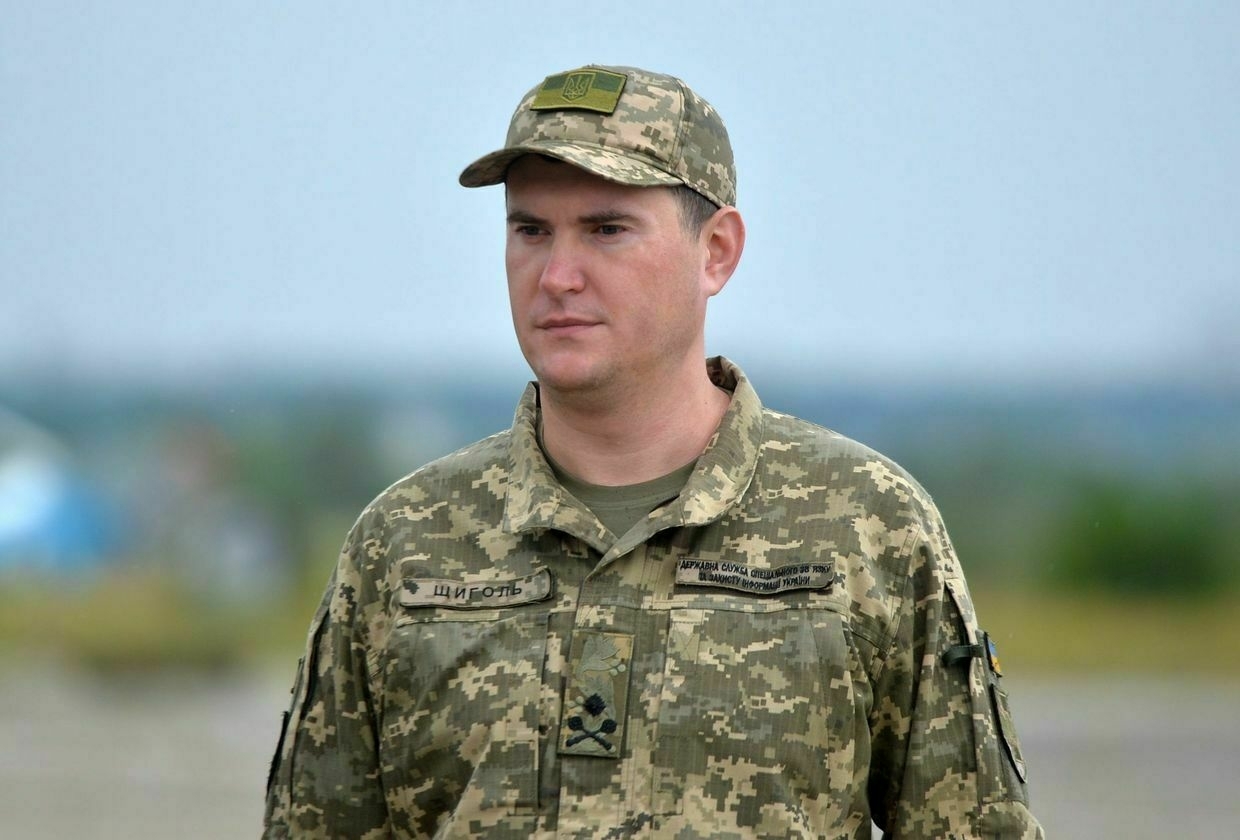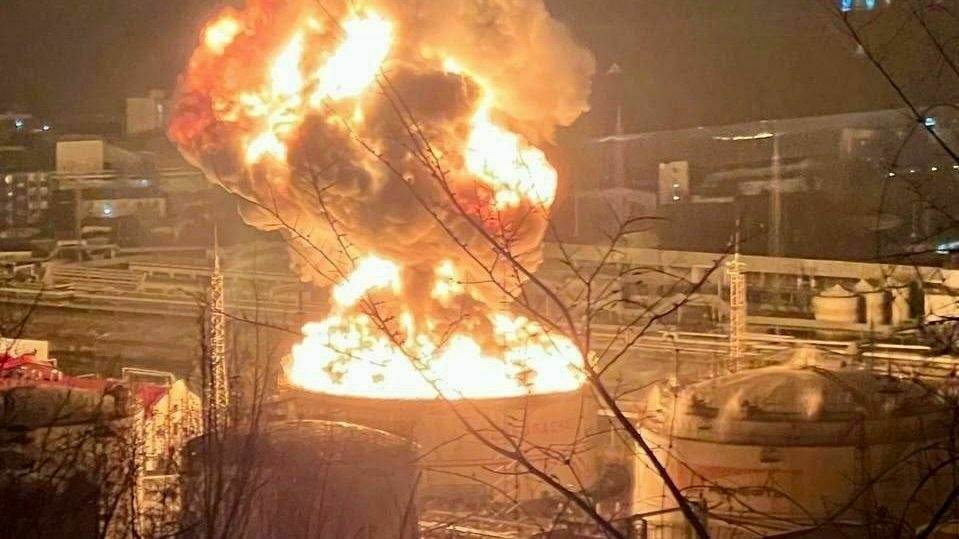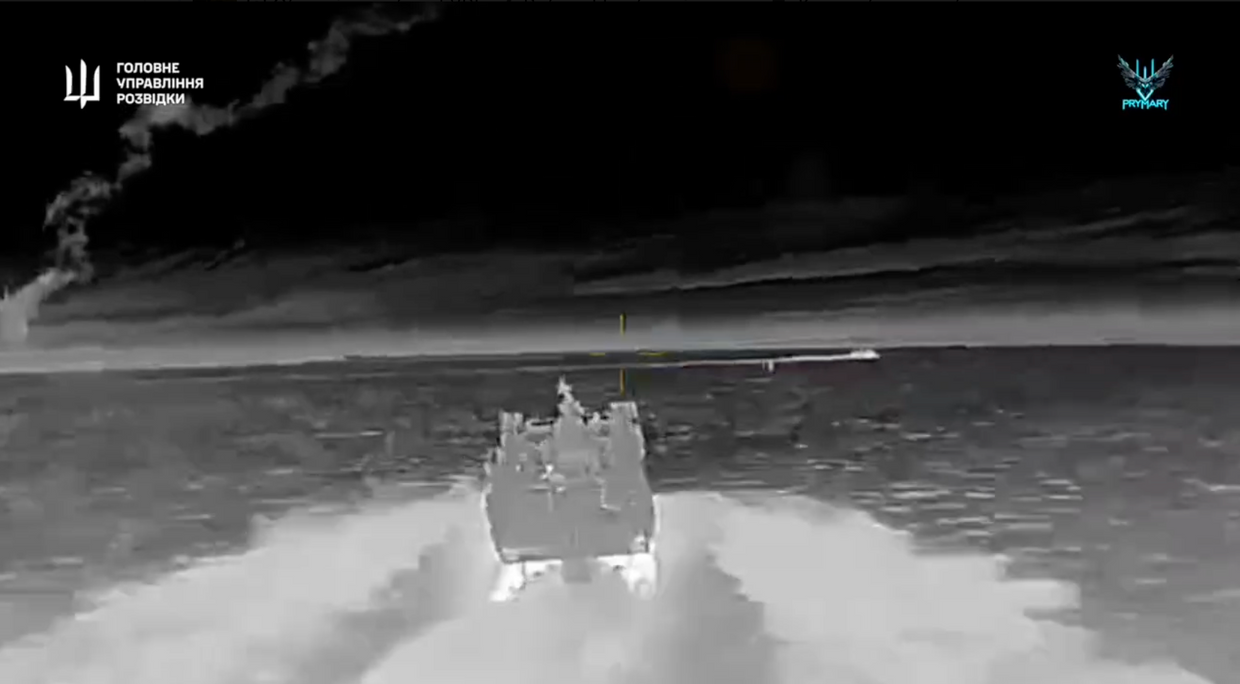
The aerial war between Russia and Ukraine is explosive in every sense. But beyond the physical dimension, it is also a battle of morale and information. Both sides are locked in a continuous back-and-forth of public statements and dramatic videos claiming hits and damage to the other side.
There’s also the question of keeping critical targets hidden — not just from the public, but from the enemy.
Last week, footage surfaced showing a fleet of drones, presumably Ukrainian, buzzing through the night sky before striking an industrial facility between Moscow and Kazan. The video, originally shared by local media, has already been taken down — another casualty in the battle over information that defines every strike.
Information on deep strikes — targeting, hits, and the drones and missiles that carry them out — is a constant intelligence battle. One of the men fighting this battle for Ukraine’s Main Intelligence Directorate, or HUR, is Brigadier General Yuriy Shchyhol.
Russia’s censorship machine is much more aggressive than Ukraine’s, Shchyhol tells the Kyiv Independent in an interview, making it easier to hide Ukraine’s wins.
“They hide whatever successful strikes that they can,” said Shchyhol. “While practically all of their hits on us are known, you have to add up our known strikes on them and multiply that number by two. And then if you compare the number of our drones and the number of successful strikes, our drones are much more effective in use.”
Russia’s big advantage, he explains, is a massive air defense arsenal. But the great drawback is the sheer size of Russia.
“There is no amount of equipment that can protect all of Russia.”
“They have one big plus — they have a lot of defenses. But they also have one big minus — a huge territory. There is no amount of equipment that can protect all of Russia,” says Shchyhol. “We’re definitely overtaking them in precision.”

Because of exactly that secrecy and informational war surrounding air strikes, it’s impossible to independently confirm the total number of successful strikes in either country, much less the degree of damage. But Ukraine is racking up conspicuous wins of late.
Recent notable Ukrainian successes have included targets like “Fiber Optic Systems,” Russia’s biggest fiber-optic maker, and a massive explosives plant well east of Moscow. Ukrainian President Volodymyr Zelensky recently announced that the “long Neptune,” a domestically made cruise missile, had gone over 3,000 kilometers into Russia.
Beyond core improvements to Ukrainian drone building since 2022, Shchyhol says that the deep-strike drones in particular are getting better, mostly because of intel. Specifically, HUR is finding more Russians willing to help Ukraine, even to the point of setting up navigation equipment waypoints ever deeper inside Russia, according to Shchyhol.
“The first thing is the quality of guidance systems that are located on their territory, from which you can gather that there are a lot more traitors on their land than they can recruit in Ukraine,” Shchyhol explains.
“In Ukraine, these are isolated incidents, and we see, per the SBU (State Security Service), that there aren’t that many. But by the effectiveness of our drones, you can tell that they have far more traitors to worry about, because there are far more people who set up the special systems that guide our drones.”
Shchyhol declined to provide specifics as to the equipment guiding these deep strikes from within Russia.
It’s not all good news. Ukrainian production constantly runs up against limits in high-end components like inertial guidance systems and controlled pattern reception antennae, or CRPA, which can guide a drone or missile even through electronic warfare-saturated areas.
Russia has more domestic manufacturers, including Kometa, whose CPRA guides Russian glide bombs through GPS-jammed Ukrainian territory. Russia’s allies, especially China, also have no qualms about selling high-end electronics like advanced guidance systems to Moscow, often by re-routing Western-originated components.
However, Shchyhol said that when it comes to deep strikes, Russia’s game had mostly stagnated.
“If in 2022 the Shahed was considered the peak of unmanned aviation, today, the Shahed has basically not changed, especially when it comes to navigation and guidance.”
Ukrainian intelligence first sounded the alarm that Russia was buying up the Iranian-made, long-range Shaheds in August 2022. Factories in Russia are now producing them at scale, with swarms of at least several dozen crossing into Ukraine most nights.
While claiming that the current progression of Ukrainian deep-strikes to the 3,000-kilometer mark is more of a win for intelligence than engineering, Shchyhol did say the technical advancements in Ukrainian drone manufacturing are huge, particularly when compared to 2022, when he was one of the first government officials involved in providing the military with drones.
“Soldiers started reaching out, saying that we need Mavics, just Mavics. Nobody back then was saying anything about first-person-view drones, about deep-strike drones, about surveillance equipment — they just wanted Mavics,” said Shchyhol, referring to the consumer DJI quadrocopters that have been ubiquitous on the battlefield.

Today, he points to a far more developed locally made roster. “The effectiveness of Ukrainian Vampires, Nemesis, and Kashans — there’s no comparison, since nobody else on earth makes those kinds of drones,” referring to Ukraine’s swarm of “heavy” bomber drones, many outfitted with thermal vision for night raids.
At the outset of Russia’s full-scale invasion, Shchyhol was at the helm of the State Special Communications Service, or SSCS, a one-time offshoot of the State Security Service that was made independent and reconfigured for modern cyber defense in 2006.
Roughly analogous to the U.S. Cybersecurity and Infrastructure Security Agency, the SSCS ended up holding the purse strings for Ukrainian drone-buying in 2022. Digital Transformation Minister Mykhailo Fedorov ran a well-publicized and successful international donation campaign.
One of the first high-ranking officials to recognize the value of cheap drones at the Ukrainian front lines at the time, Fedorov directed the military side of those foreign fundraising drives toward his “Army of Drones,” a fund that ended up not in the Defense Ministry, but in the SSCS, which Fedorov semi-formally coordinated.
“The Defense Ministry was overloaded with just the procurement procedures, and politically it wasn’t all that correct for the Defense Ministry to take funds from our partners and spend them on Chinese drones,” said Shchyhol. “The partners might not understand.”
The arrangement hasn’t been without controversy. In December, Ukraine’s Cabinet of Ministers unceremoniously stripped Fedorov of his semi-formal authority over the SSCS — a move observers at the time alleged was the result of a power struggle with Andriy Yermak, head of Ukraine’s Presidential Office.
Shchyhol’s own departure followed allegations of corruption tied to a major drone purchase. He was accused of purchasing high-end Chinese Autel consumer drones through intermediary firms at inflated prices. At the time, he was also out on bail in a separate case involving the alleged misuse of budget funds to buy overpriced equipment and software during his tenure at the SSCS.
Shchyhol argues today that the inflated pricing was out of necessity for a product that was niche and not sold in bulk at the time.
“In May of 2023, these Autels did not exist on the market,” he said. “In Ukraine, they did not exist. I mean, if you want one or two, sure, but en masse? They didn't exist.”
His then-second-in-command, Brigadier General Oleksandr Potiy, now heads the agency.
Note from the author:
Hi, this is Kollen, the author of this article. Thanks for reading. Ukrainians’ responses to Russia’s invasion showcase a society that is deeply resilient and inventive, despite pullbacks in aid. If you like reading stories highlighting the development of Ukraine's wartime technology and economy from on the ground, please consider supporting our work by becoming a member of the Kyiv Independent.
 The Kyiv IndependentYuliia Taradiuk
The Kyiv IndependentYuliia Taradiuk
